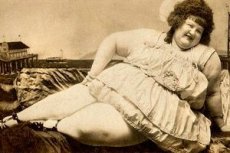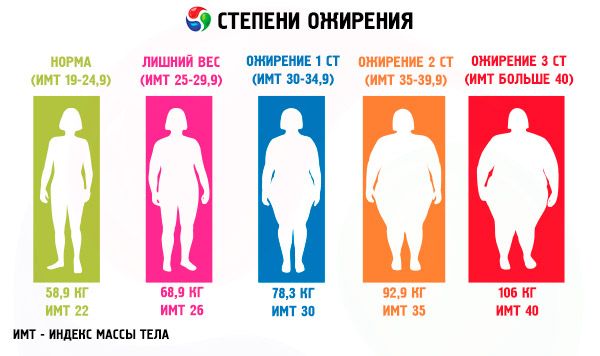Medical expert of the article
New publications
Morbid obesity in adults: new treatments
Last reviewed: 05.07.2025

All iLive content is medically reviewed or fact checked to ensure as much factual accuracy as possible.
We have strict sourcing guidelines and only link to reputable media sites, academic research institutions and, whenever possible, medically peer reviewed studies. Note that the numbers in parentheses ([1], [2], etc.) are clickable links to these studies.
If you feel that any of our content is inaccurate, out-of-date, or otherwise questionable, please select it and press Ctrl + Enter.

Causes morbid obesity
The causes of morbid obesity may be the following factors:
- various infections that disrupt metabolic processes in the body;
- adrenal diseases;
- damage and diseases of the pituitary gland;
- diseases of the sex glands or thyroid gland.
It is usually quite difficult to separate the various causes of morbid obesity from each other, since in this case the problems to some extent affect all the glands responsible for internal secretion.
Pathogenesis
In this disease, the essence of the process of fat deposition is that an imbalance is created between the energy entering the body in the form of food, as well as its subsequent expenditure. There are also additional factors such as hormonal imbalances - which enhance the process of fat deposition, but in general the mechanism of pathology development remains the same as indicated above.
 [ 20 ], [ 21 ], [ 22 ], [ 23 ], [ 24 ], [ 25 ], [ 26 ], [ 27 ]
[ 20 ], [ 21 ], [ 22 ], [ 23 ], [ 24 ], [ 25 ], [ 26 ], [ 27 ]
Symptoms morbid obesity
The main symptom of this disease is excess body weight, which can be determined using BMI. To do this, divide your weight (in kg) by your height squared (in m). For example, with a height of 1.70 m and a weight of 80 kg, BMI is calculated as follows: 80/1.70 2 = 27.68. The normal BMI for men is 20-25, and for women - 19-23.
Among the external symptoms of morbid obesity are the following:
- presence of a double chin;
- the appearance of folds of fat on the sides and abdomen;
- the legs are shaped like breeches;
- underdevelopment of the muscular system.
Later, with obesity, the following signs begin to appear:
- increased sweating;
- emotional instability (frequent feelings of nervousness or irritability);
- constant feeling of drowsiness;
- the appearance of shortness of breath;
- nausea and general weakness;
- limbs begin to swell;
- constant constipation, and in addition to this, painful sensations in the joints and spine.

Against the background of morbid obesity, such diseases often develop as pathologies of the musculoskeletal system, cardiovascular system, and liver. They manifest themselves as increased blood pressure, pancreatitis, and arthrosis of the joints.
Forms
There are several types of morbid obesity:
- Alimentary-constitutional. This type of obesity can develop due to the following reasons: overeating from early childhood, the adopted diet (due to national traditions), heredity, and physical inactivity. In addition, the development of obesity can be affected by disorders in the processes of fat metabolism and the state of the hypothalamus centers, which are responsible for appetite and satiety. The cause can also be the structure of adipose tissue, as well as hormonal imbalance (during menopause, pregnancy or breastfeeding).
- Cerebral. Develops as a result of skull damage, brain tumor, neuroinfection, or prolonged increase in intracranial pressure.
- Endocrine. Occurs as a result of a primary disease of the endocrine glands (hypothyroidism, Cushing's syndrome, insulinoma, or hypogonadism).
- Medicinal. Develops due to prolonged use of drugs that increase appetite or activate the process of liposynthesis.
Complications and consequences
Among the most common complications of the disease are such disorders as type 2 diabetes mellitus, hypertension, sleep apnea, as well as various pathologies of the spine and large joints.

Diagnostics morbid obesity
Obese patients are initially shown a medical examination, during which the patient's weight and BMI should be determined. In addition, a survey is conducted to find out the patient's lifestyle: learn about the diet and diet, the physical activity he or she performs, etc. At the same time, background diseases (which the patient has suffered from and is currently suffering from) are also identified - this is considered the main task of the doctor.
Tests
To make a diagnosis, blood tests may be needed to check sugar levels, lipoproteins, triglycerides, and cholesterol.
Instrumental diagnostics
In addition, instrumental diagnostic procedures are also carried out:
- ultrasound;
- MRI, as well as CT;
- NMR procedure;
- radiography;
- ECG together with echocardiography.
 [ 42 ], [ 43 ], [ 44 ], [ 45 ], [ 46 ], [ 47 ], [ 48 ], [ 49 ]
[ 42 ], [ 43 ], [ 44 ], [ 45 ], [ 46 ], [ 47 ], [ 48 ], [ 49 ]
Who to contact?
Treatment morbid obesity
To treat morbid obesity, it is necessary to follow a selected diet, exercise, and take medications. It should be noted that the range of modern anti-obesity drugs is quite small, and all of them have contraindications and side effects.
Medicines
Drug therapy consists of medications with peripheral and central effects. The drug is selected for each patient individually - to take into account possible contraindications and effectiveness.
The drug Orlistat has a peripheral effect. It blocks intestinal lipases, thereby reducing the absorption of fats. As a result, the body begins to experience a lack of energy, thereby reducing body weight. In addition, due to a decrease in the number of FFA and monoglycerides in the intestinal lumen, the absorption of cholesterol and its solubility are weakened - due to this, hypercholesterolemia is reduced. The advantage of the drug is that it can be prescribed to patients of any age group, because it acts only in the intestine, without affecting other systems with organs. Side effects include oily discharge from the anus, gas with a small amount of discharge, and in addition, urgent urge to empty the bowels, increased frequency of bowel movements, fecal incontinence, and steatorrhea. In some cases, pain in the intestine (similar to colic) is possible - this is the reason for discontinuing the drug.
Sibutramine has a central effect - it is an inhibitor of OASI. The drug is contraindicated to take together with MAOIs, as well as in case of intolerance to the components of the drug, bulimia or anorexia. In addition, it is prohibited to take if the patient has a history of cardiovascular diseases (such as CHF or ischemic heart disease, circulatory problems, heart disease, tachycardia, as well as arrhythmia and hypertension in severe form), kidney or liver disorders, thyrotoxicosis, prostate adenoma or glaucoma. But it is Sibutramine that is the most effective drug against morbid obesity (in combination with other methods of therapy). Prescribing an adequate dose (from 10 mg per day with a gradual increase to 15-20 mg (this is individual, depending on the patient's feelings)) and taking the drug correctly (1-2 tablets in the morning (between 10:00 and 11:00), regardless of food) will allow you to get the desired result. Weight is reduced naturally, because the patient begins to eat less. Due to the fact that Sibutramine is a centrally acting drug and has some contraindications, it is recommended to prescribe it only to patients in the young age category and who do not have serious concomitant pathologies.
Meridia is a drug with a central effect - treatment with it is carried out only under the supervision of a general practitioner, who will take into account all possible contraindications and restrictions.
Xenical weakens the process of fat absorption in the intestine, thereby preventing the absorption of dietary fat entering the body with food (up to 30%). Because of this, it should be taken into account that a probable side effect of taking the drug will be diarrhea (in some cases quite severe).
Vitamins
In morbid obesity, patients often have a deficiency of vitamin D in the body.
Physiotherapy treatment
Of the existing methods of physiotherapy treatment for morbid obesity, the following are used:
- bitemporal inductothermy;
- mineral waters;
- hydro- and balneotherapy (in this case, the effect is carried out through neurohumoral mechanisms, causing a reflex effect on the body);
- oxyhyperthermia;
- bath procedures of several types: dry air (in a sauna), and in addition to this, infrared (the short-wave region of UVR is often used - approximately 780-1400 nm) and steam;
- mud therapy.
Traditional and herbal medicine
Among the folk methods of treating morbid obesity:
- use a decoction of calendula, birch leaves, thyme, and poplar - add it to a bath of water, which you then need to take (about 20 minutes);
- prepare a herbal infusion that includes the following ingredients: birch leaves, blackberries, and coltsfoot. A mixture of these components (1 tablespoon) should be added to boiling water (1 glass) and infused for 1 hour. Drink the infusion in the morning or before lunch (fresh).
 [ 50 ], [ 51 ], [ 52 ], [ 53 ], [ 54 ], [ 55 ]
[ 50 ], [ 51 ], [ 52 ], [ 53 ], [ 54 ], [ 55 ]
Acupressure for morbid obesity
Acupressure or point massage is one of the traditional methods of Chinese medicine. There are several points on the body that affect weight loss - they can be stimulated by pressing with your fingertips. These bioactive points are located in different areas of the body. A correctly found point will hurt slightly due to pressure during massage, and this is normal. But if the pain is too strong, you should immediately stop pressing on it.
First point: obesity in people often begins as a result of regular overeating, so it is necessary to stimulate the point that is responsible for the saturation center. It is located near the ear. To determine the location of the point, you should move the lower jaw up/down and trace the exact area of movement with your finger (where you will feel the jaw moving is the desired point). You need to press on this place and hold for 2-3 minutes. This massage should be done before eating.
Second point: sometimes obesity develops due to a weakened digestive system. To have a positive effect on the gastrointestinal tract, you should massage point E-36, which is located at a distance of about 4 fingers down from the kneecap (near the outer side of the tibia). To find it, you need to put your palm on your knee. Its index finger, which will be on the outer surface of the shin, will be in the area of the point - a small depression can be felt there. You should press on it for about 15-30 seconds. It is important to clarify that these points need to be stimulated on both legs (to avoid imbalance in the body). Pregnant women are contraindicated to affect this point.
The third point: it is also called point No. 9 of the pancreas-spleen meridian. It is located very close to point E-36 - from it you need to move your fingers closer to the inner side of the leg and move a little higher, to the knee, to a point with a small depression. Stimulating this place helps regulate water exchange processes, which will be especially useful for those who have problems with removing water from the body.
The fourth point: is a point of the large intestine meridian and is located near the elbow - on the inner surface of its fold. In order to find this place, you need to move your finger along the fold towards the inner surface of the joint until you feel a depression. When performing the massage, it is recommended to hold your hand close to the body. You should massage the left hand first, and then the right.
Surgical treatment
There are also methods of surgical treatment of morbid obesity. The method is quite radical, it allows you to get rid of obesity immediately. Nowadays, there are several different methods of performing the operation - both irreversible and reversible. Among the first is a procedure such as gastric bypass. In addition to it, there are other methods - a gastric band, sleeve gastroplasty, and in addition to this, liposuction of the abdomen.
It should be noted that the operation is not permitted to be performed if the patient is a drug or substance abuser or abuses alcoholic beverages.
Nutrition and diet for morbid obesity
The main principle of a low-calorie diet is the need to create a diet in which a person can be satisfied with low-calorie food, which will also be useful for the body. The number of calories that a person needs per day is about 1600. At the same time, the diet should not contain a lot of liquid, sugar and salt, as well as flour products (bread too).
The menu for such a diet should look something like this:
- For breakfast, a small portion of low-fat cottage cheese and 1 apple;
- For lunch – soup made with meat broth, which may contain a little meat, and in addition to this, canned green peas and unsweetened apple mousse;
- For dinner – grated carrots and rosehip infusion;
- For a late dinner, you can drink kefir (1 glass).
It is allowed to increase the number of meals to satisfy the feeling of hunger. But in this case, you will have to slightly reduce the volume of portions eaten. In this case, you should adhere to the following diet:
- 1st part of breakfast (early) – an egg fried in sunflower oil, as well as a simple salad without any dressing or coffee;
- 2nd part of breakfast (late) – a little boiled cauliflower;
- For lunch you can eat a plate of green cabbage soup and 2 apples;
- For an early dinner, you are allowed to eat cottage cheese and wash it down with rosehip infusion;
- For a late dinner, drink kefir (1 glass).
With such a low-calorie diet, it is necessary to arrange so-called "fasting days". This should happen once a week. On such days, it is recommended to eat as follows:
- Milk day – drink kefir or milk every 2 hours;
- Vegetable day – eat about 1 kg of the same type of vegetables per day (necessarily raw) – such as carrots, cabbage, tomatoes, etc.;
- Cottage cheese day – eat cottage cheese (0.5 kg) together with coffee and sour cream (alternating them with rosehip broth);
- Apple day – eat fresh apples (1-1.5 kg) in approximately equal portions throughout the day;
- Meat day – during the day you are allowed to eat a little boiled meat (about 300 g), seasoning it with a vegetable side dish, and also drink rosehip tea and coffee.
Drugs
Prevention
Among the preventive methods against obesity, the following can be distinguished:
- maintain a balanced diet that is healthy for the body;
- remove unhealthy foods from your diet, such as sandwiches, chips, soda, etc.;
- lead an active lifestyle, play sports;
- control your own weight.
Forecast
Morbid obesity often has a very unfavorable prognosis. In general, obese patients die earlier than people with normal weight. The main causes of death include possible cerebral hemorrhage, heart failure, complications of cholelithiasis, myocardial infarction, lobar pneumonia and other infections, as well as surgical intervention, etc.
If left untreated, the disease progresses, and the severity of complications and the risk of their development increase in proportion to the increase in the amount of fat reserves, their distribution throughout the body, and absolute muscle mass. After weight loss, most patients return to the weight they had before treatment within the next 5 years, so it can be concluded that obesity requires a lifelong control program, as with any other chronic pathology.


